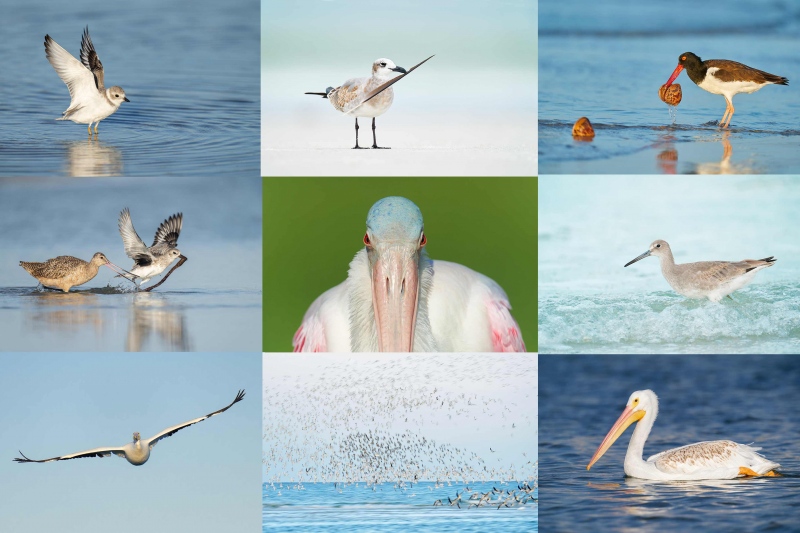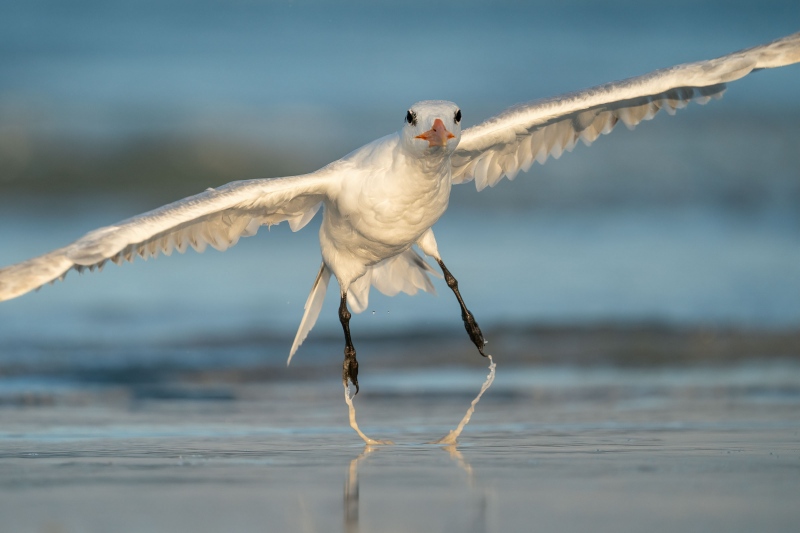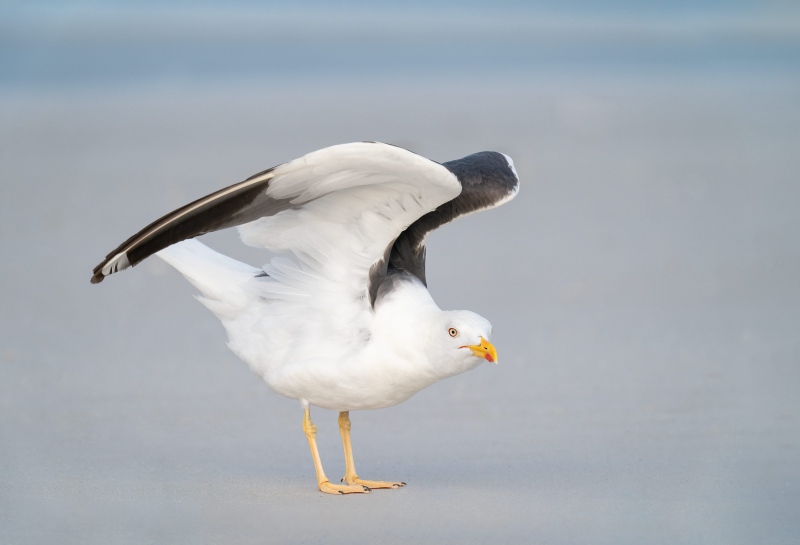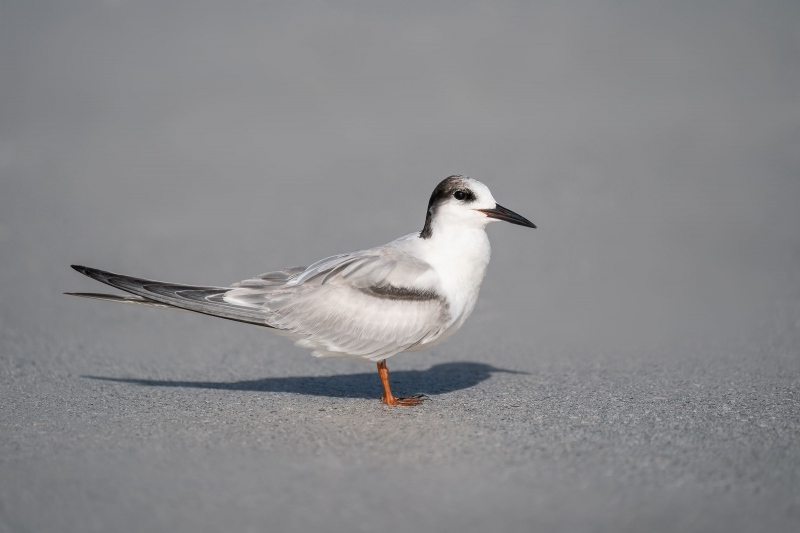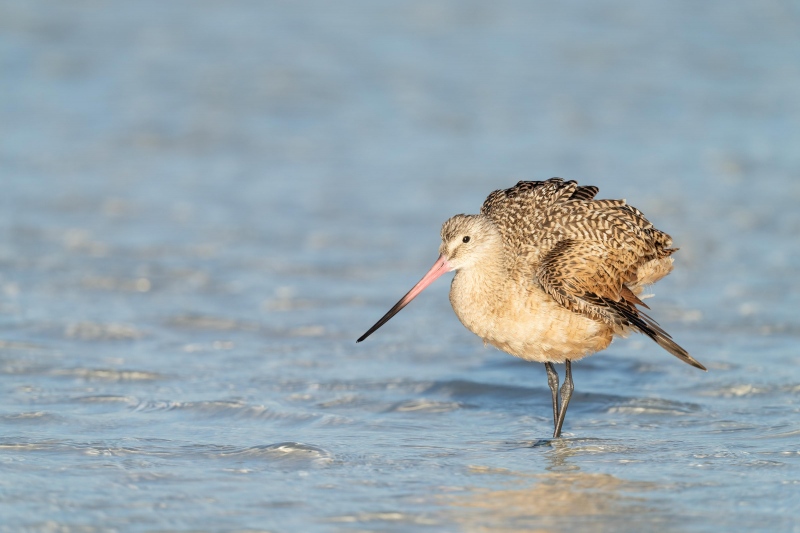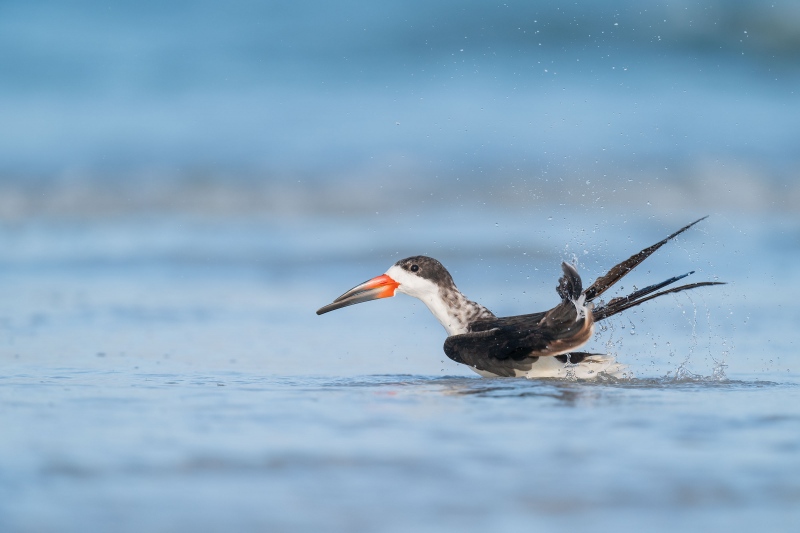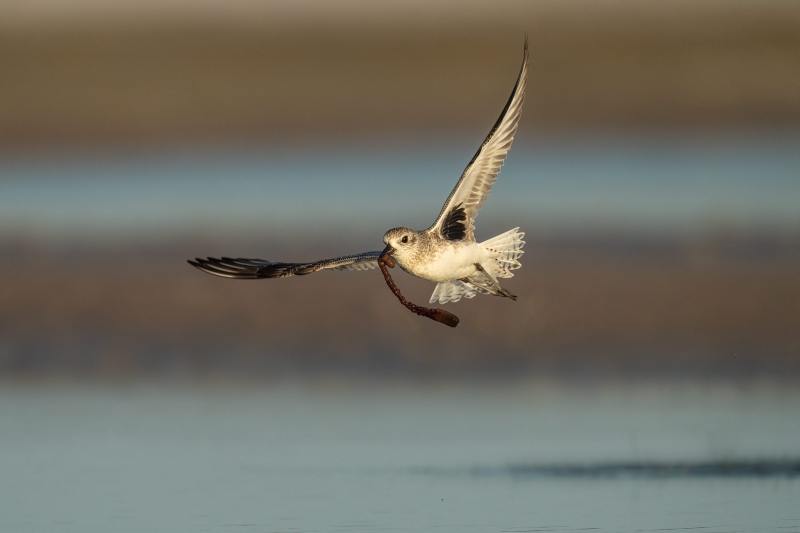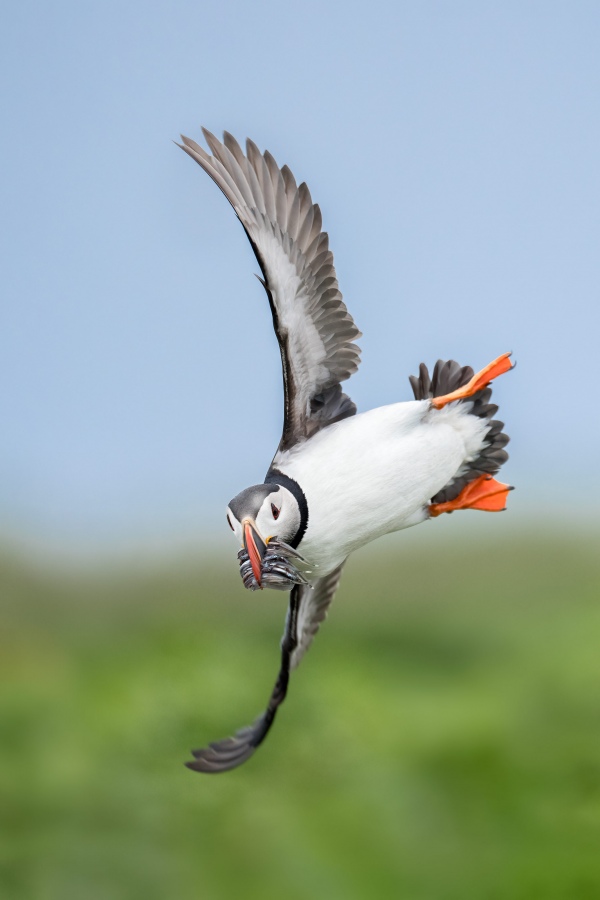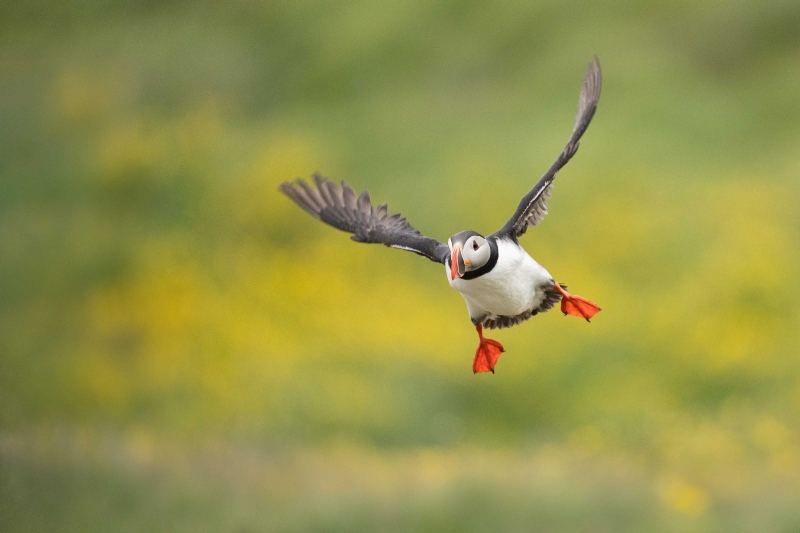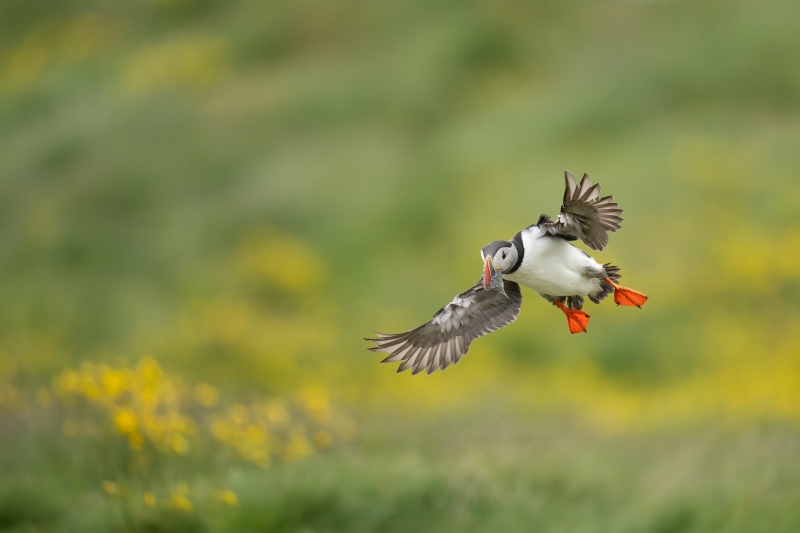July 22nd, 2023 Your Call?
Which of today’s six featured images do you like best. Be so kind as to leave a comment and let everyone know why you made your choice. I have two clear favorites that I will share with you here on Monday.
What’s Up?
Photography on Grimsey Island continues to be fantastic. On Thursday, I created many Family Jewels-type images and have already optimized seven of them. Friday morning dawned foggy; the light was spectacular as the sun broke through. If you would like info on Greg Downing’s 2024 and/or the 2025 puffin trips, please shoot me an e-mail by clicking here.
Today is Saturday 22 July 2023. Puffins and seabirds and sea-scapes are on the menu. I am hoping for another foggy start to the day. Wherever you are and whatever you are doing, I hope that you too have a great day.
Please remember to use the B&H and Amazon links that are found on most blog pages and to use the BIRDSASART discount code at checkout when purchasing your new gear from Bedfords to get 3% back on your credit card and enjoy free second-day air FedEx. Please, also, consider joining a BAA IPT. You will be amazed at how much you will learn!
You can find some great photo accessories (and necessities, like surf booties!) on Amazon by clicking on the Stuff tab on the orange/yellow menu bar above. On a related note, it would be extremely helpful if blog-folks who, like me, spend too much money on Amazon, would get in the habit of clicking on the Amazon logo link on the right side of each blog post when they shop online. As you might expect, doing so will not cost you a single penny, but would be appreciated tremendously by yours truly. And doing so works seamlessly with your Amazon Prime account.
If an item — a Delkin flash card, or a tripod head — for example, that is available from B&H and/or Bedfords, is also available in the BAA Online Store, it would be great, and greatly appreciated, if you would opt to purchase from us. We will match any price. Please remember also to use my B&H affiliate links or to earn 3% cash back at Bedfords by using the BIRDSASART discount code at checkout for your major gear purchases. Doing either often earns you free guides and/or discounts. And always earns my great appreciation.
|
|
|
All images from SEPT/OCT/NOV at Fort DeSoto.
Click on the image to enjoy a larger, sharper high-resolution version.
Clockwise from upper left to center: Piping Plover flapping after bath, juvenile Laughing Gull with feather, American Oystercatcher with sea urchins, Willet foraging in surf, American White Pelican juvenile swimming, skimmer/tern/shorebird blast-off blur, American White Pelican in flight, Black-bellied Plover stealing lugworm from Marbled Godwit, Roseate Spoonbill staring.
|
The Fall 2023 Fort DeSoto Instructional Photo-Tours
Fall 2023 Fort DeSoto Instructional Photo-Tour #1
3 1/2 Days: Tuesday 26 September through the morning session on Friday 29 September 2023. $1899.00 includes three working lunches. Limit six photographers.
Fall 2023 Fort DeSoto Instructional Photo-Tour #2
3 1/2 Days: Tuesday 17 October through the morning session on Friday 20 October 2023. $1899.00 includes three working lunches. Limit six photographers.
Fall 2023 Fort DeSoto Instructional Photo-Tour #3
3 1/2 Days: Tuesday 14 November through the morning session on Friday 17 November 2023. $1899.00 includes three working lunches. Limit six photographers.
Fall Bird Photography at Fort DeSoto
Fort DeSoto, located just south of St. Petersburg, FL, is a mecca for migrant shorebirds, terns, and gulls in fall. There they join hundreds of egrets, herons, and night-herons that winter on the T-shaped peninsula. With any luck at all, we should get to photograph one of Florida’s most desirable shorebird species: Marbled Godwit. Black-bellied Plover and Willet are easy, American Oystercatcher is pretty much guaranteed. Great Egret, Snowy Egret, Great Blue Heron, Tricolored Heron, and White Ibis are easy as well and we will almost surely come up with a tame Yellow-crowned Night-Heron or two. And there should be some quality Brown Pelican flight photography. In addition, Royal, Sandwich, Forster’s, and Caspian Terns will likely provide us with some good flight opportunities as well. Though not guaranteed, Roseate Spoonbill and Wood Stork might well be expected. And we will be on the lookout for a migrant passerine fallout in the event of a thunderstorm or two.
On this IPT, all will learn the basics and fine points of digital exposure. Nikon and Canon folks will learn to get the right exposure every time after making a single test exposure, and SONY folks will learn to use Zebras so that they can be sure of making excellent exposures before pressing the shutter button. Everyone will learn how to approach free and wild birds without disturbing them, to understand and predict bird behavior, to identify many species of shorebirds, to spot the good situations, to choose the best perspective, to see and understand the light, and to design pleasing images by mastering your camera’s AF system. Most importantly, you will surely learn to evaluate wind and sky conditions and understand how they affect bird photography. And you will learn how and why to work in Manual mode (even if you’re scared of it). The best news is that you will be able to take everything you learn home with you so that you will be a better photographer wherever and whenever you photograph.
|

|
|
Clockwise from upper left to center: Long-billed Curlew, juvenile Tricolored Heron, Marbled Godwits, Great Blue Heron, juvenile Pectoral Sandpiper, Wood Stork, smiling Sea Scallop, Ruddy Turnstone scavenging needlefish, Great Blue Heron sunset silhouette at my secret spot, and southbound migrant tern flock blur.
|
The Details
There will be a Photoshop/image review session during or after lunch (included) each full day. That will be followed by Instructor Nap Time.
These IPTs will run with only a single registrant (though that is not guaranteed). The best airport is Tampa (TPA). Once you register, you will receive an e-mail with Gulfport AirBnB/VRBO information. If you register soon and would like to share an AirBnB with me, shoot me an e-mail. Other possibilities including taking a cab to and from the airport to our AirBnB and riding with me for $50/day. This saves you both gas and the cost of a rental car.
A $600 deposit is due when you sign up and is payable by credit card. Balances must be paid by check one month before the trip. Your deposit is non-refundable unless the IPT sells out with six folks, so please check your plans carefully before committing. You can register by calling Jim during weekday business hours at 863-692-0906 with a credit card in hand, or by sending a check as follows: make the check out to: BIRDS AS ART and send it via US mail here: BIRDS AS ART, PO BOX 7245, Indian Lake Estates, FL 33855. You will receive a confirmation e-mail with detailed instructions, clothing, and gear advice. Please shoot me an e-mail if you plan to register or if you have any questions on lodging.
Up Early, Stay Out Late!
Obviously, folks attending an IPT will be out in the field early and stay late to take advantage of the sweetest light and sunrise and sunset colors (when possible). The good news is that the days are relatively short in early fall. I really love it when I am leaving the beach on a sunny morning after a great session just as a carful or two of well-rested photographers are arriving. On cloudy days, we may — at the leader’s discretion, stay out in the morning for a long session and skip the afternoon session. To ensure early starts, breakfasts will be your responsibility. And so that we can get some sleep, dinners will be on your own as well.
|
|
|
This image was created on 9 September 2020 on a Fall Fort DeSoto Park IPT. Seated on wet sand, I used the handheld Sony FE 200-600mm f/5.6-6.3 G OSS lens (at 588mm) and a9 II (now replaced by The One, the Sony Alpha 1 Mirrorless digital camera. ) The exposure was determined using Zebra technology with ISO on the Thumb Dial. ISO 1000. 1/2500 second at f/6.3 (wide-open) in Manual Mode. AWB at 7:41:22am on a sunny morning. RawDigger showed the exposure to be perfect.
Tracking: Zone AF-C grabbed the tern’s feet. Be sure to click on the image to enjoy a high-res version.
Image #1: Royal Tern taking flight
|
a9 II Autofocus
a9 II AF is quite excellent most of the time but was not up to the task with the image above as the system grabbed the tern’s feet. Since I loved everything else about the image, especially the liquid sand dripping off the tern’s feet, I opted to try and sharpen the face. First, I ran Topaz Sharpen AI on the bird’s face and bill and followed that up with a contrast mask (as detailed in Digital Basics II). I was happy with the results.
|
|
|
This image was created on 20 September 2021 on a Fort DeSoto IPT. Seated on damp sand, I used the handheld Sony FE 600mm f/4 GM OSS lens Sony FE 1.4x Teleconverter, and with the a9 II (now replaced by The One, the Sony Alpha 1 Mirrorless Digital Camera.. ISO 1000. The exposure was determined by Zebras with ISO on the rear wheel: 1/1250 second at f/5.6 (wide open) in Manual mode. AWB at 8:10:51am on hazy/sunny morning.
Tracking: Spot M/AF-C performed perfectly. Click on the image to enjoy the high-res version.
Image #2: Lesser Black-backed Gull stretching — breeding plumage
|
Three decades ago, Lesser-blacked Gull was a mega-rarity in North America. Over the years, they have become increasingly common along the east coast. I am not sure why this individual was in breeding plumage in the fall. It is the handsomest of its species I have seen either on Long Island or in Florida. The elegant wing stretch and the soft light combined to make this one a special image for me.
|
|
|
This image was created on 22 September 2020 on a Fall Fort DeSoto Park IPT. Seated on dry sand, I used the handheld Sony FE 200-600mm f/5.6-6.3 G OSS lens (at 600mm) and a9 II (now replaced by The One, the Sony Alpha 1 Mirrorless digital camera. ) The exposure was determined using Zebra technology with ISO on the Thumb Dial. ISO 800. 1/5000 second at f/6.3 (wide-open) in Manual Mode. AWB at 9:21:10am on a partly sunny morning.
Tracking: Spot M worked just fine. Be sure to click on the image to enjoy a high-res version.
Image #3: Common Tern — probably bird of the year
|
Aging Common Tern
With the black carpal bar and the black hind cap, most folks would age this bird as being a young of the year, just a few months old. In a recent conversation with Joe DiCostanzo, assistant director of the Great Gull Island Common Tern Project, he stated that while most birds that look like this one are juveniles, such birds might actually be ten or twenty years old. Age terns with the utmost caution.
|
|
|
This image was created on 24 September 2020 on a Fort DeSoto IPT. Seated on damp sand using the knee pod technique, I used the handheld Sony FE 600mm f/4 GM OSS lens Sony FE 1.4x Teleconverter, and with the a9 II (now replaced by The One, the Sony Alpha 1 Mirrorless Digital Camera.. ISO 1000. The exposure was determined by Zebras with ISO on the rear wheel: 1/2500 second at f/5.6 (wide open) in Manual mode. AWB at 8:26:08am on sunny morning.
Tracking: Spot M/AF-C performed perfectly. Click on the image to enjoy the high-res version.
Image #4: Marbled Godwit ruffling
|
Shoulda’ Gotten Lower!
While I love shorebirds, especially Marbled Godwit, I wish that I had gotten lower for this one. But it was before I learned the toe-pod technique. Join me at DeSoto this fall to learn a variety of getting low techniques and a ton more. Consider the diversity of species in today’s post along with the different techniques that you need to master and use every day to improve your photography.
|
|
|
This image was created on 25 September 2020 on a Fort DeSoto IPT. Seated on damp sand using the knee pod technique, I used the handheld Sony FE 600mm f/4 GM OSS lens Sony FE 1.4x Teleconverter, and with the a9 II (now replaced by The One, the Sony Alpha 1 Mirrorless Digital Camera.. ISO 800. The exposure was determined by Zebras with ISO on the rear wheel: 1/2000 second at f/5.6 (wide open) in Manual mode. AWB at 8:22:26am on sunny morning.
Tracking: Spot M/AF-C performed perfectly. Click on the image to enjoy the high-res version.
Image #5: Black Skimmer bathing
|
The Look-back Head Angle
When a bird’s body is angled away from you, wait for the bird to turn its head back toward you as seen in the image above. This not only creates eye contact with the viewer, but, assuming you are close to being on sun angle, will pleasingly light the bird’s face an give you a much better chances of having a nice highlight in the eye.
|
|
|
This image was created on 21 October 2021 on a Fort DeSoto IPT. Seated on damp sand using the knee-pod rest technique, I used the handheld Sony FE 600mm f/4 GM OSS lens Sony FE 1.4x Teleconverter, and with The One, the Sony Alpha 1 Mirrorless Digital Camera.. ISO 1600. The exposure was determined by Zebras with ISO on the rear wheel: 1/4000 second at f/6.3 (stopped down 1/3-stop — don’t ask me why) in Manual mode. AWB at 8:07:10am on sunny morning.
Tracking: Zone/AF-C with Bird Face-Eye Detection enabled performed perfectly. Click on the image to enjoy the high-res version.
Image #6: Black-bellied Plover taking flight with lugworm
|
Handholding the 600 at 840mm
When looking for flight or action, I am able to handhold the 600mm f/4 with or without the 1.4X TC for brief periods of time. For long flight photography sessions or with the 2X TC in place, I have no chance.
Typos
With all blog posts, feel free to e-mail or to leave a comment regarding any typos or errors.
July 22nd, 2023 Your Call?
Which of today’s six featured images do you like best. Be so kind as to leave a comment and let everyone know why you made your choice. I have two clear favorites that I will share with you here on Monday.
What’s Up?
Photography on Grimsey Island continues to be fantastic. On Thursday, I created many Family Jewels-type images and have already optimized seven of them. Friday morning dawned foggy; the light was spectacular as the sun broke through. If you would like info on Greg Downing’s 2024 and/or the 2025 puffin trips, please shoot me an e-mail by clicking here.
Today is Saturday 22 July 2023. Puffins and seabirds and seascapes are on the menu. I am hoping for another foggy start to the day. Wherever you are and whatever you are doing, I hope that you too have a great day.
Please remember to use the B&H and Amazon links that are found on most blog pages and to use the BIRDSASART discount code at checkout when purchasing your new gear from Bedfords to get 3% back on your credit card and enjoy free second-day air FedEx. Please, also, consider joining a BAA IPT. You will be amazed at how much you will learn!
You can find some great photo accessories (and necessities, like surf booties!) on Amazon by clicking on the Stuff tab on the orange/yellow menu bar above. On a related note, it would be extremely helpful if blog-folks who, like me, spend too much money on Amazon, would get in the habit of clicking on the Amazon logo link on the right side of each blog post when they shop online. As you might expect, doing so will not cost you a single penny, but would be appreciated tremendously by yours truly. And doing so works seamlessly with your Amazon Prime account.
If an item — a Delkin flash card, or a tripod head — for example, that is available from B&H and/or Bedfords, is also available in the BAA Online Store, it would be great, and greatly appreciated, if you would opt to purchase from us. We will match any price. Please remember also to use my B&H affiliate links or to earn 3% cash back at Bedfords by using the BIRDSASART discount code at checkout for your major gear purchases. Doing either often earns you free guides and/or discounts. And always earns my great appreciation.
|
|
|
All images from SEPT/OCT/NOV at Fort DeSoto.
Click on the image to enjoy a larger, sharper high-resolution version.
Clockwise from upper left to center: Piping Plover flapping after bath, juvenile Laughing Gull with feather, American Oystercatcher with sea urchins, Willet foraging in surf, American White Pelican juvenile swimming, skimmer/tern/shorebird blast-off blur, American White Pelican in flight, Black-bellied Plover stealing lugworm from Marbled Godwit, Roseate Spoonbill staring.
|
The Fall 2023 Fort DeSoto Instructional Photo-Tours
Fall 2023 Fort DeSoto Instructional Photo-Tour #1
3 1/2 Days: Tuesday 26 September through the morning session on Friday 29 September 2023. $1899.00 includes three working lunches. Limit six photographers.
Fall 2023 Fort DeSoto Instructional Photo-Tour #2
3 1/2 Days: Tuesday 17 October through the morning session on Friday 20 October 2023. $1899.00 includes three working lunches. Limit six photographers.
Fall 2023 Fort DeSoto Instructional Photo-Tour #3
3 1/2 Days: Tuesday 14 November through the morning session on Friday 17 November 2023. $1899.00 includes three working lunches. Limit six photographers.
Fall Bird Photography at Fort DeSoto
Fort DeSoto, located just south of St. Petersburg, FL, is a mecca for migrant shorebirds, terns, and gulls in fall. There they join hundreds of egrets, herons, and night-herons that winter on the T-shaped peninsula. With any luck at all, we should get to photograph one of Florida’s most desirable shorebird species: Marbled Godwit. Black-bellied Plover and Willet are easy, American Oystercatcher is pretty much guaranteed. Great Egret, Snowy Egret, Great Blue Heron, Tricolored Heron, and White Ibis are easy as well and we will almost surely come up with a tame Yellow-crowned Night-Heron or two. And there should be some quality Brown Pelican flight photography. In addition, Royal, Sandwich, Forster’s, and Caspian Terns will likely provide us with some good flight opportunities as well. Though not guaranteed, Roseate Spoonbill and Wood Stork might well be expected. And we will be on the lookout for a migrant passerine fallout in the event of a thunderstorm or two.
On this IPT, all will learn the basics and fine points of digital exposure. Nikon and Canon folks will learn to get the right exposure every time after making a single test exposure, and SONY folks will learn to use Zebras so that they can be sure of making excellent exposures before pressing the shutter button. Everyone will learn how to approach free and wild birds without disturbing them, to understand and predict bird behavior, to identify many species of shorebirds, to spot the good situations, to choose the best perspective, to see and understand the light, and to design pleasing images by mastering your camera’s AF system. Most importantly, you will surely learn to evaluate wind and sky conditions and understand how they affect bird photography. And you will learn how and why to work in Manual mode (even if you’re scared of it). The best news is that you will be able to take everything you learn home with you so that you will be a better photographer wherever and whenever you photograph.
|

|
|
Clockwise from upper left to center: Long-billed Curlew, juvenile Tricolored Heron, Marbled Godwits, Great Blue Heron, juvenile Pectoral Sandpiper, Wood Stork, smiling Sea Scallop, Ruddy Turnstone scavenging needlefish, Great Blue Heron sunset silhouette at my secret spot, and southbound migrant tern flock blur.
|
The Details
There will be a Photoshop/image review session during or after lunch (included) each full day. That will be followed by Instructor Nap Time.
These IPTs will run with only a single registrant (though that is not guaranteed). The best airport is Tampa (TPA). Once you register, you will receive an e-mail with Gulfport AirBnB/VRBO information. If you register soon and would like to share an AirBnB with me, shoot me an e-mail. Other possibilities including taking a cab to and from the airport to our AirBnB and riding with me for $50/day. This saves you both gas and the cost of a rental car.
A $600 deposit is due when you sign up and is payable by credit card. Balances must be paid by check one month before the trip. Your deposit is non-refundable unless the IPT sells out with six folks, so please check your plans carefully before committing. You can register by calling Jim during weekday business hours at 863-692-0906 with a credit card in hand, or by sending a check as follows: make the check out to: BIRDS AS ART and send it via US mail here: BIRDS AS ART, PO BOX 7245, Indian Lake Estates, FL 33855. You will receive a confirmation e-mail with detailed instructions, clothing, and gear advice. Please shoot me an e-mail if you plan to register or if you have any questions on lodging.
Up Early, Stay Out Late!
Obviously, folks attending an IPT will be out in the field early and stay late to take advantage of the sweetest light and sunrise and sunset colors (when possible). The good news is that the days are relatively short in early fall. I really love it when I am leaving the beach on a sunny morning after a great session just as a carful or two of well-rested photographers are arriving. On cloudy days, we may — at the leader’s discretion, stay out in the morning for a long session and skip the afternoon session. To ensure early starts, breakfasts will be your responsibility. And so that we can get some sleep, dinners will be on your own as well.
|
|
|
This image was created on 9 September 2020 on a Fall Fort DeSoto Park IPT. Seated on wet sand, I used the handheld Sony FE 200-600mm f/5.6-6.3 G OSS lens (at 588mm) and a9 II (now replaced by The One, the Sony Alpha 1 Mirrorless digital camera. ) The exposure was determined using Zebra technology with ISO on the Thumb Dial. ISO 1000. 1/2500 second at f/6.3 (wide-open) in Manual Mode. AWB at 7:41:22am on a sunny morning. RawDigger showed the exposure to be perfect.
Tracking: Zone AF-C grabbed the tern’s feet. Be sure to click on the image to enjoy a high-res version.
Image #1: Royal Tern taking flight
|
a9 II Autofocus
a9 II AF is quite excellent most of the time but was not up to the task with the image above as the system grabbed the tern’s feet. Since I loved everything else about the image, especially the liquid sand dripping off the tern’s feet, I opted to try and sharpen the face. First, I ran Topaz Sharpen AI on the bird’s face and bill and followed that up with a contrast mask (as detailed in Digital Basics II). I was happy with the results.
|
|
|
This image was created on 20 September 2021 on a Fort DeSoto IPT. Seated on damp sand, I used the handheld Sony FE 600mm f/4 GM OSS lens Sony FE 1.4x Teleconverter, and with the a9 II (now replaced by The One, the Sony Alpha 1 Mirrorless Digital Camera.. ISO 1000. The exposure was determined by Zebras with ISO on the rear wheel: 1/1250 second at f/5.6 (wide open) in Manual mode. AWB at 8:10:51am on hazy/sunny morning.
Tracking: Spot M/AF-C performed perfectly. Click on the image to enjoy the high-res version.
Image #2: Lesser Black-backed Gull stretching — breeding plumage
|
Three decades ago, Lesser-blacked Gull was a mega-rarity in North America. Over the years, they have become increasingly common along the east coast. I am not sure why this individual was in breeding plumage in the fall. It is the handsomest of its species I have seen either on Long Island or in Florida. The elegant wing stretch and the soft light combined to make this one a special image for me.
|
|
|
This image was created on 22 September 2020 on a Fall Fort DeSoto Park IPT. Seated on dry sand, I used the handheld Sony FE 200-600mm f/5.6-6.3 G OSS lens (at 600mm) and a9 II (now replaced by The One, the Sony Alpha 1 Mirrorless digital camera. ) The exposure was determined using Zebra technology with ISO on the Thumb Dial. ISO 800. 1/5000 second at f/6.3 (wide-open) in Manual Mode. AWB at 9:21:10am on a partly sunny morning.
Tracking: Spot M worked just fine. Be sure to click on the image to enjoy a high-res version.
Image #3: Common Tern — probably bird of the year
|
Aging Common Tern
With the black carpal bar and the black hind cap, most folks would age this bird as being a young of the year, just a few months old. In a recent conversation with Joe DiCostanzo, assistant director of the Great Gull Island Common Tern Project, he stated that while most birds that look like this one are juveniles, such birds might actually be ten or twenty years old. Age terns with the utmost caution.
|
|
|
This image was created on 24 September 2020 on a Fort DeSoto IPT. Seated on damp sand using the knee pod technique, I used the handheld Sony FE 600mm f/4 GM OSS lens Sony FE 1.4x Teleconverter, and with the a9 II (now replaced by The One, the Sony Alpha 1 Mirrorless Digital Camera.. ISO 1000. The exposure was determined by Zebras with ISO on the rear wheel: 1/2500 second at f/5.6 (wide open) in Manual mode. AWB at 8:26:08am on sunny morning.
Tracking: Spot M/AF-C performed perfectly. Click on the image to enjoy the high-res version.
Image #4: Marbled Godwit ruffling
|
Shoulda’ Gotten Lower!
While I love shorebirds, especially Marbled Godwit, I wish that I had gotten lower for this one. But it was before I learned the toe-pod technique. Join me at DeSoto this fall to learn a variety of getting low techniques and a ton more. Consider the diversity of species in today’s post along with the different techniques that you need to master and use every day to improve your photography.
|
|
|
This image was created on 25 September 2020 on a Fort DeSoto IPT. Seated on damp sand using the knee pod technique, I used the handheld Sony FE 600mm f/4 GM OSS lens Sony FE 1.4x Teleconverter, and with the a9 II (now replaced by The One, the Sony Alpha 1 Mirrorless Digital Camera.. ISO 800. The exposure was determined by Zebras with ISO on the rear wheel: 1/2000 second at f/5.6 (wide open) in Manual mode. AWB at 8:22:26am on sunny morning.
Tracking: Spot M/AF-C performed perfectly. Click on the image to enjoy the high-res version.
Image #5: Black Skimmer bathing
|
The Look-back Head Angle
When a bird’s body is angled away from you, wait for the bird to turn its head back toward you as seen in the image above. This not only creates eye contact with the viewer, but, assuming you are close to being on sun angle, will pleasingly light the bird’s face and gives you a much better chance of having a nice highlight in the eye.
|
|
|
This image was created on 21 October 2021 on a Fort DeSoto IPT. Seated on damp sand using the knee-pod rest technique, I used the handheld Sony FE 600mm f/4 GM OSS lens Sony FE 1.4x Teleconverter, and with The One, the Sony Alpha 1 Mirrorless Digital Camera.. ISO 1600. The exposure was determined by Zebras with ISO on the rear wheel: 1/4000 second at f/6.3 (stopped down 1/3-stop — don’t ask me why) in Manual mode. AWB at 8:07:10am on sunny morning.
Tracking: Zone/AF-C with Bird Face-Eye Detection enabled performed perfectly. Click on the image to enjoy the high-res version.
Image #6: Black-bellied Plover taking flight with lugworm
|
Handholding the 600 at 840mm
When looking for flight or action, I am able to handhold the 600mm f/4 with or without the 1.4X TC for brief periods of time. For long flight photography sessions or with the 2X TC in place, I have no chance.
Typos
With all blog posts, feel free to e-mail or to leave a comment regarding any typos or errors.
July 20th, 2023 What’s Up?
Grimsey continues to be fabulous. The rain is long gone and has been replaced by gloriously cloudy-bright skies that are prefect for photography. We have worked the Black Guillemots around the harbor, found a Common Ringed-Plover nest with three eggs, spent Wednesday morning photographing Northern Fulmars in flight and with chicks, and have enjoyed the best-in-the-world Atlantic Puffin photography. If anyone tells you that they will take you to the greatest-ever puffin photo location and they are not talking about Grimsey Island, they are simply not telling the truth. Grimsey is simply incredible.
On Wednesday afternoon, trip leader Greg Downing took the ferry back to the mainland with Eugen and Kevin who will be flying back to the states on Friday morning. They are all looking forward to one more chance at the Red-throated Loons. I will be photographing on Grimsey till Greg gets back with Bruce Dudek a week from today.
Today is Thursday 10 July 2023. Wherever you are and whatever you are doing, I hope that you too have a great day.
If you would like info on the 2024 and/or the 2025 puffin trips, please shoot me an e-mail by clicking here.
Please remember to use the B&H and Amazon links that are found on most blog pages and to use the BIRDSASART discount code at checkout when purchasing your new gear from Bedfords to get 3% back on your credit card and enjoy free second-day air FedEx. Please, also, consider joining a BAA IPT. You will be amazed at how much you will learn!
You can find some great photo accessories (and necessities, like surf booties!) on Amazon by clicking on the Stuff tab on the orange/yellow menu bar above. On a related note, it would be extremely helpful if blog-folks who, like me, spend too much money on Amazon, would get in the habit of clicking on the Amazon logo link on the right side of each blog post when they shop online. As you might expect, doing so will not cost you a single penny, but would be appreciated tremendously by yours truly. And doing so works seamlessly with your Amazon Prime account.
If an item — a Delkin flash card, or a tripod head — for example, that is available from B&H and/or Bedfords, is also available in the BAA Online Store, it would be great, and greatly appreciated, if you would opt to purchase from us. We will match any price. Please remember also to use my B&H affiliate links or to earn 3% cash back at Bedfords by using the BIRDSASART discount code at checkout for your major gear purchases. Doing either often earns you free guides and/or discounts. And always earns my great appreciation.
|
|
|
This image was created on 17 July 2023 at Grimsey Island, Iceland. Standing at full height on a small rise, I used the Robus RC-5558-3 Vantage Series 3 Carbon Fiber Tripod topped by the Levered-Clamp FlexShooter Pro-mounted Sony FE 600mm f/4 GM OSS lens and The One, the Sony Alpha 1 Mirrorless digital camera. ISO 3200. Exposure was determined via Zebras with ISO on the rear dial: 1/2500 sec. at f/4 (wide open). AWB at 8:07:40pm on cloudy evening.
Tracking: Zone/AF-C was active at the moment of exposure and performed perfectly. Be sure to click on the image to enjoy the larger version.
Image #1: Atlantic Puffin wheeling in flight with fish for chick in burrow
|
Getting Ready to Shoot Flight
When you approach a flight photography situation, take a few minutes to analyze things. Ask yourself, “Where is the wind from?” Note the quality and direction of the light. Most importantly, study the patterns of the birds in flight. After you consider all the factors, choose what you think is the best gear, pick what you think is the best spot, and get to work. That is what Greg and I have done every day. Because Greg knew all the best flight spots, our job was easy; especially since we are pretty much on the same wave length.
The Third Way to Shoot Puffins in Flight
One Wednesday morning I created many sharp flight images of Northern Fulmars in flight while handling the 600mm f/4 with the 1.4X TC. As the birds came by every minute or two, handholding the 6 1/2 pound lens was do-able. With the puffins flying in non-stop, handholding was out of the question so I put the 600 f/4 GM on the tripod, and thanks to the fact that the birds were flying predictable paths and were being slowed down by the wind, I was quite successful. If you cannot hold a big lens comfortably, get it on the tripod with a /Levered-Clamp FlexShooter Pro and make some great images. Comfortably.
|
|
|
This image was also created on 17 July 2023 at Grimsey Island, Iceland. Standing at full height on a small rise, I used the Robus RC-5558-3 Vantage Series 3 Carbon Fiber Tripod topped by the Levered-Clamp FlexShooter Pro-mounted Sony FE 600mm f/4 GM OSS lens and The One, the Sony Alpha 1 Mirrorless digital camera. ISO 4000. Exposure was determined via Zebras with ISO on the rear dial: 1/2500 sec. at f/4 (wide open). AWB at 8:15:32pm on cloudy evening.
Tracking: Zone/AF-C was active at the moment of exposure and performed perfectly. Be sure to click on the image to enjoy the larger version.
Image #2: Atlantic Puffin incoming with suffused yellow flower background
|
A Great Move
I was shooting the braking, incoming puffins against the white sky when Greg shouted over the wind, “Come on up here and you can get a sweet yellow flower background. So I walked back up the hill a bit, and did just that. I believe that the flowers are Arctic poppies.
|
|
|
This image was also created on 17 July 2023 at Grimsey Island, Iceland. Standing at full height on a small rise, I used the Robus RC-5558-3 Vantage Series 3 Carbon Fiber Tripod topped by the Levered-Clamp FlexShooter Pro-mounted Sony FE 600mm f/4 GM OSS lens and The One, the Sony Alpha 1 Mirrorless digital camera. ISO 3200. Exposure was determined via Zebras with ISO on the rear dial: 1/2500 sec. at f/4 (wide open). AWB at 8:29:27pm on cloudy evening.
Tracking: Zone/AF-C was active at the moment of exposure and performed perfectly. Be sure to click on the image to enjoy the larger version.
Image #3: Atlantic Puffin small in the frame with flowers
|
Puffin Scapes and Flight Creativity
Autofocus with the current mirrorless gear is so good that once you have the basics down, learn to acquire focus quickly, can routinely create sharp images and keep the bird in the frame while tracking it in flight, you will often have five- or ten- or fifteen-frame sequences from which to choose the best wing positions and flight poses. The size of the bird in the frame will vary from situation to situation. As you pan with the the subject, the backgrounds will vary as well. Once you have acquired the necessary skills, the very best images are often serendipitous. The more sharp frames you can create, the greater the chance of making something special.
Your Call?
Which of today’s featured images do you like best? Why?
Typos
With all blog posts, feel free to e-mail or to leave a comment regarding any typos or errors.
|
|

